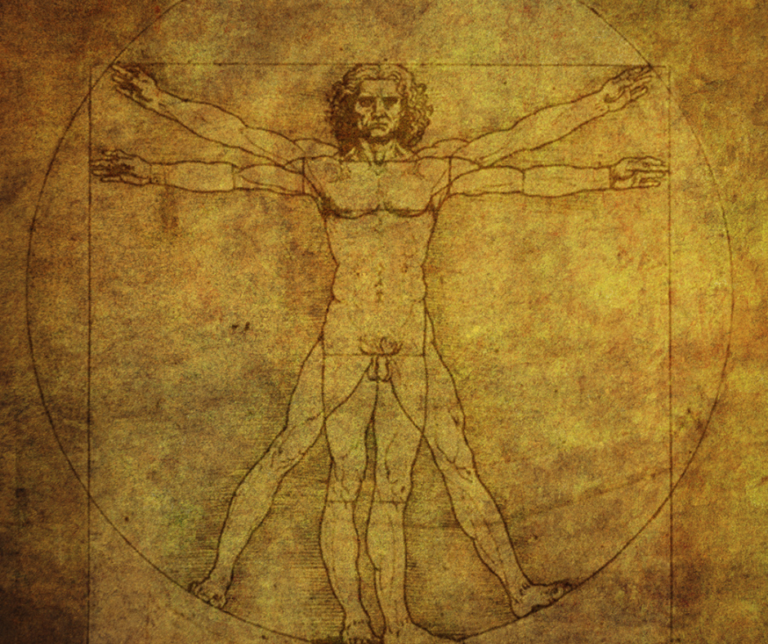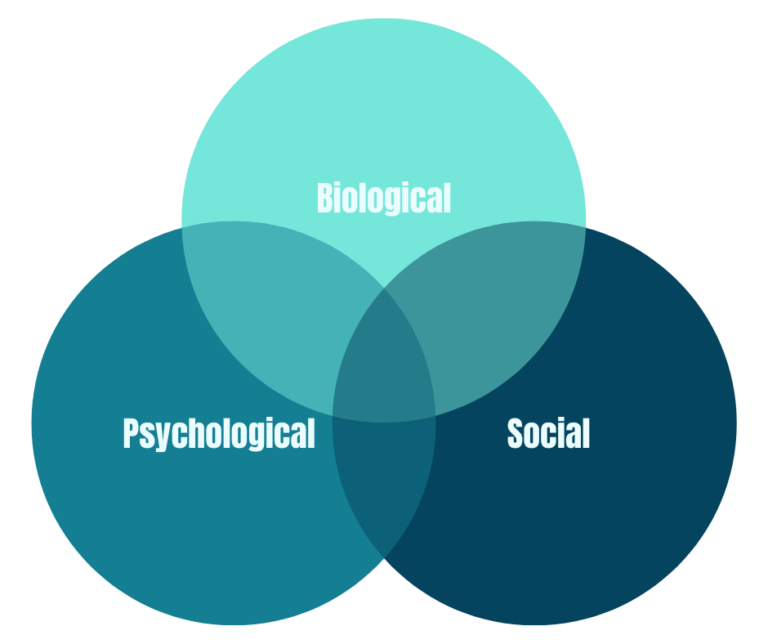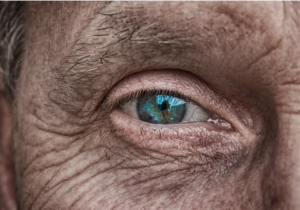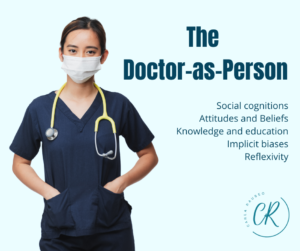So here’s a question for you: Have you ever wondered how the pervasive and meddling biomedical model came to be? How did it become so popular, so mainstream and how on earth did it become what George Engel called a “folk model,” (a socially adapted model that has become embedded as a culturally held belief system, or dogma)?
Let’s think about it. Let’s look at the history of pain, for example. In the 1700’s and 1800’s, pain was very closely linked to religion and spirituality. Some people believed that it was a duty to endure pain as it was sent by God as payment for transgressions. Some believed that pain was a gift to be sued for spiritual renewal.1 Some healthcare providers at that time held biases that dictated that the working class could either exaggerate their pain or be insensitive to pain.2 So we clearly see the influence of psychosocial factors in how pain was viewed and treated.
Yet still, at that same time, despite the clear link between psychosocial factors and health, the biomedical model was conceived. How did that happen? This blog post will review its conception, and what led to the subsequent development of the BPSM. “Biopsychosocial” is another domain of person-centered care, as discussed in my first blog here. This month’s blog, the 4th in the series on the domains of person-centered care, will also follow the BPSM through its formation, the challenges it has faced, and the subsequent alterations made by more modern authors. But in order to do that, it is necessary to have a walk through history to understand the biomedical model first, and the problems it has created for healthcare.

A little history
So how did the biomedical model come to be? The Christian Church held great power in the 18th and 19th centuries, and it held the dualist perspective that the body was simply a vessel that the soul and mind occupied for a short while before moving on. Also at that time, scientists and physicians were interested in exploring the anatomy and physiology of the body. The Church permitted this on the condition that they refrain from exploring man’s mind and behaviour which the Church claimed as its domain.3
In addition, the popular scientific theory at the time, based on the work of Descartes, Galileo and Newton, was that the world was composed of entities that could be separated into isolable parts. The whole could be understood by reconstruction of the parts. Enter mind-body dualist thinking, where the mind, emotions and behavior were separated from the physical state. The body was viewed as a machine, and disease focused solely on biological processes. From this, the biomedical approach was born.
Biomedical Problems:
The biomedical model has served humanity well in many ways. Breakthrough concepts such as Germ Theory, paved the way for the eradication of many infectious diseases. However, this also came at a cost to humanity, particularly to the patient. Engel,3 the father of the BPSM, not only criticized the biomedical model as being dualistic, but he also decried it as reductionistic, whereby a disease is reduced to only its biological processes. He also considered the biomedical model exclusionist, as it implied that if something could not be explained, it must be excluded from the disease.
The biomedical model could not explain why a person could have a physiological abnormality yet not be ill; nor could it explain illness with absence of abnormality. It gave no credence to a patient’s experience or verbal account, or how their social environment interacts with other factors to influence the expression of the illness. Rather, it focused on laboratory tests and medical procedures and ignored the power of the doctor-patient relationship in the clinical encounter. For more on the doctor-patient relationship see my previous blog post on the therapeutic alliance.
Birth of the Biopsychosocial Model
In order to account for these short comings of the biomedical model, and to highlight the importance of social and psychological factors in a person’s health, Engel proposed the BPSM model in the 1970’s. The BPSM is composed of 3 domains which include the biological domain, the psychological domain, and the social domain, all of which interact to influence the person’s experience of their illness. Engel3 used general systems theory as a theoretical foundation of the BPSM. General systems theory refers to hierarchical organization of a system, where a change in one variable affects the others. Thus, a change in the psychological domain of the BPSM, can affect both the social and physiological expression of the illness.
The BPSM has made “good traction” in healthcare, as exemplified by the ICD-11 codes which spell out the importance of BPS factors in chronic pain.4 A number of studies have documented benefits of the BPS approach in patient outcomes.5–11 Van Erp et al6 reported that BPS interventions seemed to be more effective than education or advice, and as effective as physical activity in persons with chronic low back pain in reducing pain and disability in the short, medium and long term.

Problems with the Biopsychosocial Model
Whilst the BPSM has shown promise in healthcare, the model is plagued with challenges in practice. There has been a significant amount of commentary in the literature about these issues.4,7,12–17 The criticisms relate to the fact that the BPSM has been poorly conceptualized and this has affected implementation of the model in practice. There are two major criticisms: implementation of the model is 1) reductionistic and 2) fragmented.7,13,15,17 Ironically, these are the same criticisms as the biomedical model!
Reductionism
The BPSM has been decried as reductionistic because implementation continues to focus primarily on the biological aspects of a patient’s illness whilst operating under the guise of a holistic and humanistic model. This is considered biomedicalization of the BPSM.15 It reflects the biomedical model. Pain neuroscience education is an example of an intervention that has been highlighted as being biomedical, despite its claim of a BPS foundation. It reduces pain to a biological process in the brain, trivializing Engel’s humanistic elements. This neurocentric approach has been cleverly termed “neuromania,”15 a term that reflects the crazed excitement of the clinical world when pain neuroscience seemed to solve the problems of clinicians treating patients with chronic pain by claiming to explain pain. I still have clear memories of my excitement when I first learned about pain neuroscience education. “Finally!” I naively thought, “the answer to solving the problem of the person with chronic pain!.” I was certainly quite disappointed when it failed to live up to the expectation of this “magic drug.”
This biomedicalization of the BPSM can also be seen in the outcome measures used in BPS approaches, which commonly focus on pain intensity, disability, and function. This attempt to “objectify” treatment responses or to use the BPSM as a scaffold to quantify a person’s health experience neglects Engel’s intention that meaning for the patient is “preeminent to measurement.”15 Indeed, this reflects Stilwell and Harman’s critique that the BPSM “lacks the phenomenological considerations of experience.”14
Fragmentation
The second critique of the implementation of the BPSM in practice is that it is fragmented.7,13,15,17,18 Its three domains are considered separately, which perpetuates the dualistic philosophy of the biomedical model. Such a fragmented approach is considered low value care.17 In fact, the fragmented use of the BPSM in the treatment of low back pain has been suggested as a reason for the lack of notable patient outcomes despite the use of evidence-based BPS approaches to treatment of the condition.18
This fragmented approach is evidenced in a recent systematic review by Ng et al19 who noted that healthcare providers were unable to make connections between the different domains of the BPSM in order to apply the model in a humanistic way. Thus, if a biological cause cannot be identified, the cause must then be psychological, according to the fragmented application. This may lead to stigmatization and frustration of the patient and can even perpetuate pain. Certainly, we’ve all had that experience early on in our careers where we wrote off a challenging patient as having “psych issues.” Am I right?
However, it is no surprise that such fragmentation occurs in clinical practice because it is rampant in research. There is a strong focus on the biological domain in research.13 We see this in the attempts at separate measurements of each domain of the BPSM in studies that investigate more than one dimension of the BPSM.
Fragmentation of the BPSM is further evidenced by the comparatively low number of studies that include the social domain.7,13,16 This is surprising considering the well-documented influence of the social determinants of health on outcomes as well as patient preferences/values, and the patient-provider relationship.21–26 For example, Pincus and Castrejon27 clearly show that low level of education and lower socioeconomic status (SES) are associated with a higher prevalence of many chronic diseases, including higher severity of osteoarthritis symptoms…and this is not because persons with lower SES don’t have access to care. It occurs even in universal healthcare systems where there is access. Rather, it seems that low SES may act as a “surrogate for many actions of patients, which may be as important in health outcomes as actions of health professionals.”27 The significance of the social domain has been demonstrated by Mardian et al17 who have proposed that the BPSM be termed the sociopsychobiological model to emphasize the importance of social influences on a person’s pain. Yet, despite this, fewer than 20% of clinical trials measure a patient’s SES.27

Updates to the Biopsychosocial Model
Other authors, recognizing these limitations in application of the BPSM have offered updates to the model. Interdependence and dynamism of the biological, social and psychological domains are the underpinning principles upon which these adaptations of the BPSM are based.12,28 For example, Pilgrim12 describes a person as being an open system, engaging with uncontrolled variables. Homeostasis may occur for a while, but these variables may abruptly change and subsequently affect the person’s experience. Lehman et al28 add the notion of “contextual dynamics” to the BPS domains to indicate the influence of broad patterns of culture, norms, politics and values in the “bigger picture” of the patient’s experience of disease.
They also introduce the concept of “time and centrality” which highlights the dynamics of time – some factors may change with time, becoming more or less significant to the person (centrality) as time passes and situations change. They create a hypothetical example to illustrate this point: Evette, a Native Alaskan woman who lives in rural Alaska, has strong community relationships that help her manage the psychosocial challenges that come with her history of alcohol abuse, obesity and depression (social factors that influence health). In Native Alaskan communities there is distrust of outsiders because of historical trauma from colonization and their loss of culture and language. In Evette’s community, there has been a recent influx of outsiders. Her son does not value Native Alaskan culture as she does and is unmotivated to learn the language. She feels that her cultural identity, which she used as a buffer in the past, is threatened and she relapses into depression. This hypothetical, although quite realistic example, highlights the importance of what Lehman et al28 refer to as “macrosystem factors” within the contextual dynamics, namely cultural beliefs, norms and values.
The Enactive Model
Other authors have taken this dynamic, inter-relational approach further and have modernized and expanded the BPSM into an enactive model.14,15 This approach considers the patient as a person who is embedded within their environment, who responds to and engages with all the changing external influences by employing their prior experiences, emotions and cognitions (their affordances). These internal affordances act as a scaffolding for how the person experiences and engages with the present. Similar to the dynamics approach described above, there is a developmental component to the model whereby affordances within the person, and affordances allowed to the person through their environment may change with time. There is also a relational component as demonstrated by the close interdependence and dynamic interplay between the person and their environment. Cormack et al15 summarize this well in their statement, “local and global processes characterize excerpts of the same person-environment system with varying spatio-temporal complexity that are interwoven along more or less extended feedback loops.”
Emergence
This quote can be better understood by considering the 2 focal aspects of enactivism. The first is emergence and co-determination. This refers to the idea that the parts of a system do not just combine in an additive way to create a whole. Local parts of a system behave differently in isolation than they do in the organization of a global system. There is dynamic interplay between the local parts of the system. From this interaction, a global system that is more wide-ranging than the sum of the parts emerges.
Organisational Causality
Related to emergence, is the concept of organizational causality. This is the second concept of enactivism. It challenges the fragmented trichotomy of Engel’s misappropriated model. Organisational causality refers to the idea that the properties of a global system are determined by the characteristics and the organization of the smaller systems within it. Local processes change and interact with each other and lead to changes in the global system. So, changes in global systems signify changes in the more local systems. However, a change in one local system may not necessarily lead to a change in the global system. It must be the interplay between the local systems that is the catalyst for the change in the global system.

Chronic pain as an example of emergence and organisational causality
Chronic pain is a good example to help conceptualize these two aspects of enactivism. Chronic pain is an emergent phenomenon because it is a manifestation of the interaction between the person (mind and body) and their environment. So, to ascribe pain to only biological processes or injured tissues is to simplify and fragment the pain experience of the person. Similarly, chronic pain reflects organizational causality. A person’s chronic pain may worsen if they experience a stressful incident at work and the person does not have the internal affordances to manage the stress well. This can create biological hormonal response such as increased blood pressure and cortisol levels which can sensitize the nervous system further, particularly since physical and social pain share neurobiological mechanisms.17 Thus, a change in the interplay of the local systems (hormonal and work) can change the global expression of pain and increased blood pressure. However, if the person possesses good stress management skills at work, so that only one local system is affected, this stress may not interact with other local systems (hormones) to create a cortisol and hypertensive response. Therefore, there may be no change in the person’s pain (global system).
The enactive model can serve as a framework to a person-centered approach to patient care. Buetow29 eloquently justified this: “The non-reductive, naturalistic ability of enactivism to transcend mind-body dualism shares a relational ontology with and complements a person-centred approach to health care issues such as pain management . . . An opportunity thus arises for person-centred health care to mobilize an enactive approach to pain, which extends biopsychosocial care and patient-centred health care.”
Wrapping Up
There’s just SO much to talk about when it comes to the BPSM. For me, the history and evolution of the model are particularly fascinating and highlight the great influence of politics and social trends in models of healthcare. I’m loving the enactive approach. It not only makes so much sense, but I feel it goes a long way in helping us to understand the importance of the patient-as-person, which is yet another dimension of person-centered care. We will talk about this in a subsequent blog. So stay tuned! Sign up to the blog! Don’t miss a beat! And feel free to comment with your thoughts below and share the blog with those who you think may benefit from it.
References
- Bourke J. The Story of Pain. Oxford University Press; 2014.
- Bourke J. Pain Sensitivity: An Unnatural History from 1800 to 1965. J Med Humanit. Published online 2014. doi:10.1007/s10912-014-9283-7
- Engel GL. The Need for a New Medical Model: A Challenge for Biomedicine. Psychodyn Psychiatry. 2012;40(3):377-396.
- Treede RD, Rief W, Barke A, et al. Chronic pain as a symptom or a disease: the IASP Classification of Chronic Pain for the International Classification of Diseases (ICD-11). Published online 2018. doi:10.1097/j.pain.0000000000001384
- Nicholas MK, Linton SJ, Watson PJ, Main CJ. Early Identification and Management of Psychological Risk Factors (“Yellow Flags”) in Patients With Low Back Pain: A Reappraisal. Phys Ther. 2011;91(5):737-753. doi:10.2522/ptj.20100224
- van Erp RMA, Huijnen IPJ, Jakobs MLG, Kleijnen J, Smeets RJEM. Effectiveness of Primary Care Interventions Using a Biopsychosocial Approach in Chronic Low Back Pain: A Systematic Review. Pain Pract. 2019;19(2):224-241. doi:10.1111/papr.12735
- Nicholas MK. The biopsychosocial model of pain 40 years on: time for a reappraisal? 00(00):12.
- O’Sullivan K, Dankaerts W, O’Sullivan L, O’Sullivan PB. Cognitive Functional Therapy for Disabling Nonspecific Chronic Low Back Pain: Multiple Case-Cohort Study. Phys Ther. Published online 2015. doi:10.2522/ptj.20140406
- Kamper SJ, Apeldoorn AT, Chiarotto A, et al. Multidisciplinary biopsychosocial rehabilitation for chronic low back pain. Cochrane Back and Neck Group, ed. Cochrane Database Syst Rev. Published online September 2, 2014. doi:10.1002/14651858.CD000963.pub3
- George S. What is the Effectiveness of a Biopsychosocial Approach to Individual Physiotherapy Care for Chronic Low Back Pain? Internet J Allied Health Sci Pract. 2008;6.
- Mailis A, Lakha SF. From (Ontario Ministry of Health and Long-Term Care) policy to implementation: A retrospective look at a community-based patient-centered model of care for chronic pain. Can J Pain Rev Can Douleur. 2019;3(1):114-125. doi:http://dx.doi.org/10.1080/24740527.2019.1614880
- Pilgrim D. The Biopsychosocial Model in Health Research: Its Strengths and Limitations for Critical Realists/. J Crit Realism. 2015;14(2):164-180. doi:10.1179/1572513814Y.0000000007
- Mescouto K, Olson RE, Hodges PW, Setchell J. A critical review of the biopsychosocial model of low back pain care: time for a new approach? Disabil Rehabil. Published online 2020:1-15. doi:10.1080/09638288.2020.1851783
- Stilwell P, Harman K. An enactive approach to pain: beyond the biopsychosocial model. Phenomenol Cogn Sci. 2019;18(4):637-665. doi:10.1007/s11097-019-09624-7
- Cormack B, Stilwell P, Coninx S, Gibson J. The biopsychosocial model is lost in translation: from misrepresentation to an enactive modernization. Physiother Theory Pract. Published online May 28, 2022:1-16. doi:10.1080/09593985.2022.2080130
- Chalmers KJ, Madden VJ. Shifting beliefs across society would lay the foundation for truly biopsychosocial care. J Physiother. 2019;65(3):121-122. doi:10.1016/j.jphys.2019.04.001
- Mardian AS, Hanson ER, Villarroel L, et al. Flipping the Pain Care Model: A Sociopsychobiological Approach to High-Value Chronic Pain Care. Pain Med U S. 2020;21(6):1168-1180. doi:10.1093/pm/pnz336
- Pincus T, Kent P, Bronfort G, Loisel P, Pransky G, Hartvigsen J. Twenty-Five Years With the Biopsychosocial Model of Low Back Pain—Is It Time to Celebrate? A Report From the Twelfth International Forum for Primary Care Research on Low Back Pain: Spine. 2013;38(24):2118-2123. doi:10.1097/BRS.0b013e3182a8c5d6
- Ng W, Slater H, Starcevich C, Wright A, Mitchell T, Beales D. Barriers and enablers influencing healthcare professionals’ adoption of a biopsychosocial approach to musculoskeletal pain: A systematic review and qualitative evidence synthesis. doi:10.1097/j.pain.0000000000002217
- van Dongen JM, van Hooff ML, Finch AP, et al. Do socio-demographic characteristics and/or health status explain the magnitude of differences between patient and general public utility values? A chronic low back pain patients case study. Health Qual Life Outcomes. 2019;17(1):166. doi:10.1186/s12955-019-1240-8
- Orhan C, Van Looveren E, Cagnie B, Mukhtar NB, Lenoir D, Meeus M. Are Pain Beliefs, Cognitions, and Behaviors Influenced by Race, Ethnicity, and Culture in Patients with Chronic Musculoskeletal Pain: A Systematic Review. Pain Physician. 2018;21(6):541-558. https://search.ebscohost.com/login.aspx?direct=true&db=mnh&AN=30508984&site=ehost-live
- Olah ME, Gaisano G, Hwang SW. The effect of socioeconomic status on access to primary care: An audit study. Can Med Assoc J. 2013;185(6):E263-E269. doi:http://dx.doi.org/10.1503/cmaj.121383
- Kozlov N, Benzon HT. Role of Gender and Race in Patient-Reported Outcomes and Satisfaction. Anesthesiol Clin. 2020;38(2):417-431. doi:10.1016/j.anclin.2020.01.012
- Elsamadicy AA, Kemeny H, Adogwa O, et al. Influence of racial disparities on patient-reported satisfaction and short- and long-term perception of health status after elective lumbar spine surgery. J Neurosurg Spine. Published online April 27, 2018:1-6. doi:10.3171/2017.12.SPINE171079
- Butkus R, Rapp K, Cooney TG, Engel LS, for the Health and Public Policy Committee of the American College of Physicians. Envisioning a Better U.S. Health Care System for All: Reducing Barriers to Care and Addressing Social Determinants of Health. Ann Intern Med. 2020;172(2_Supplement):S50. doi:10.7326/M19-2410
- Anastas TM, Miller MM, Hollingshead NA, Stewart JC, Rand KL, Hirsh AT. The Unique and Interactive Effects of Patient Race, Patient Socioeconomic Status, and Provider Attitudes on Chronic Pain Care Decisions. Ann Behav Med Publ Soc Behav Med. 2020;54(10):771-782. doi:10.1093/abm/kaaa016
- Pincus T, Castrejon I. Low socioeconomic status and patient questionnaires in osteoarthritis: challenges to a “biomedical model” and value of a complementary “biopsychosocial model.” Clin Exp Rheumatol. 2019;37 Suppl 120(5):18-23.
- Lehman BJ, David DM, Gruber JA. Rethinking the biopsychosocial model of health: Understanding health as a dynamic system. Soc Personal Psychol Compass. 2017;11(8):e12328. doi:10.1111/spc3.12328
- Buetow S. Person-Centred Health Care. 0 ed. Routledge; 2016. doi:10.4324/9781315744247






